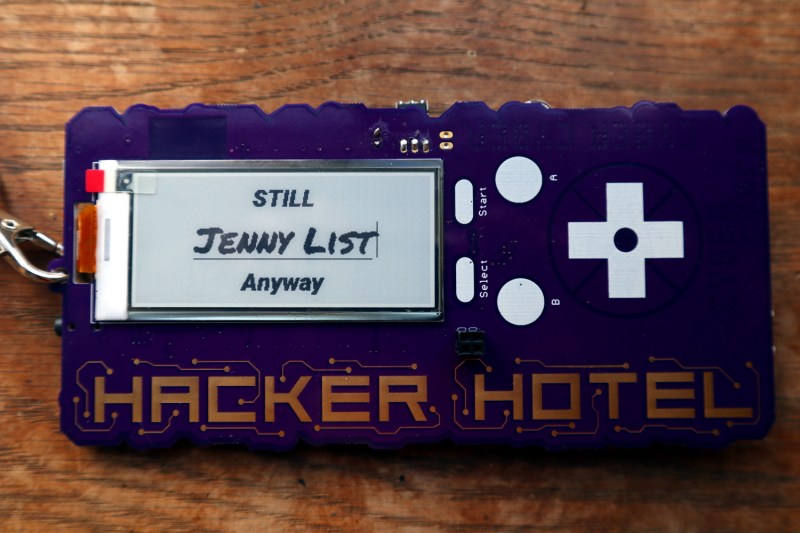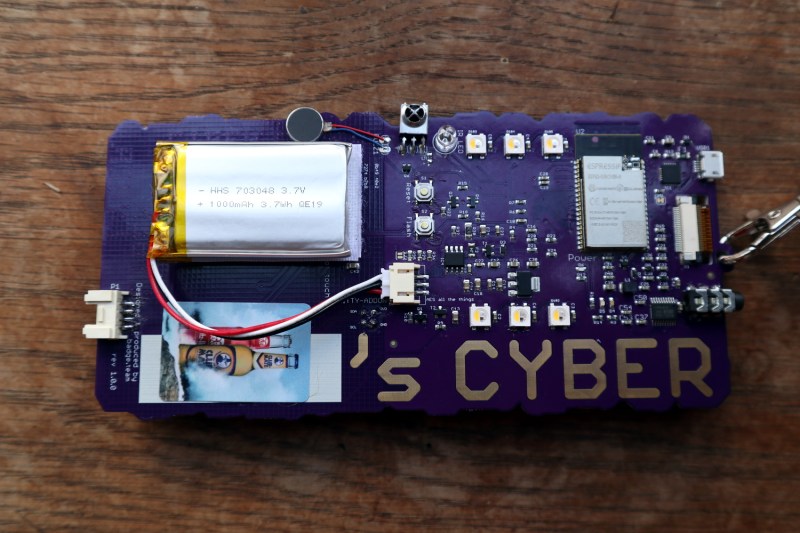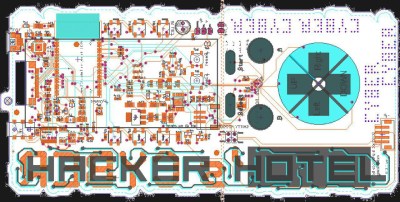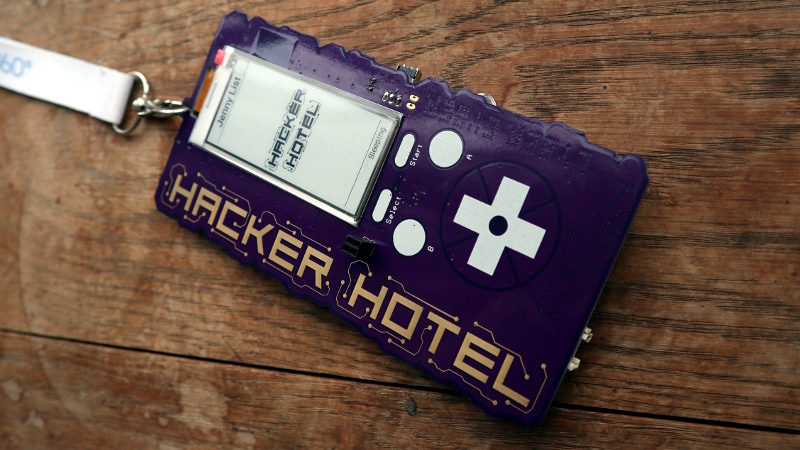When you go to a hacker conference, you always hope there’s going to be a hardware badge. This is an interactive piece of custom electronics that gets you in the door while also delighting and entertaining during the con (and hopefully far beyond it).
Hot off the presses then is the Hacker Hotel badge, from the comfortable weekend hacker camp of that name in a Netherlands hotel. As we have already noted, this badge comes from the same team that created the SHA2017 hacker camp’s offering, and shares that badge’s display, ESP32 processor, battery, and firmware. The evolution of that firmware into the badge.team platform is an exciting development in its own right, but in the context of this badge it lends a very familiar feel to the interface for those attendees who were also at the 2017 event.
A Familiar Heritage

In aesthetic design terms this badge does not try to go overboard with artwork in the vein of those you might find in the unofficial #Badgelife scene. Instead it has opted for a 160mm by 80mm not-strictly-rectangular form factor in purple soldermask and gold exposed ENIG. The outside outline of the Hacker Hotel logo disrupts the lines of the board in a subtly pleasing way. The logo runs up the left hand side, leaving the display in a portrait orientation on the right hand side and below that a set of PCB touch buttons very similar to those on the SHA badge.
There is a Shitty Addon connector near the bottom left of the display, mounted at 90 degrees to the board rather than the usual 45. This caused my colleague Brian Benchoff some amusement, given that the 45 degree orientation came about by accident.

The badge arrived in a plastic bag with the display already attached. Also in the bag were a small vibration motor, an IR LED, the Shitty Addon connector, and a Grove connector, a pair of earpieces, as well as a set of hook and loop pads for attaching the battery. Powering up the badge led straight to a home screen with the event logo, from which it was a single press of the start key to reach the menu.
The vertical orientation seemed markedly easier to use than the more horizontal arrangement on the SHA badge, though it suffers from the same problem as its predecessor of seeing unwanted button triggers. There is no on-off switch, so the trick of turning the badge off to keep your nickname visible on the e-ink screen became an inconvenience of teasing the battery connector in and out.
All of the badge’s components are found on the rear. The ESP32 module is now a WROVER-8 compared to the SHA badge’s WROOM, providing 8Mb of SRAM as well as more interfaces. It shares the LED and power circuitry, MPR121QR2 touch button chip, and CP210X USB-to-serial chip with its predecessor, but adds a PCM5102A audio DAC and an IR remote control transmitter and receiver. This last component was not present in the badge kit, instead the event badge bar could supply one. Missing SHA badge components are the SD card socket and the expansion connector.
We Can Hack Around This

The SHA badge suffered from a batch of fake USB-to-serial chips requiring an emergency rework with an extra SMD component, this badge sports a footprint ready for this fix should it be needed. This badge escaped more serious hardware bugs, but does contain a couple of mistakes. The Grove connector had a slightly different footprint from the component that arrived, and somehow the audio jack had its footprint reversed, something that did not affect reproduction with the supplied headphones but which rendered it useless as a line output. The connector simply needed a spot of cyanoacrylate glue and there was a PCB rework fix for the jack, but neither issue compromised the operation of the badge.
So… How Well Did They Do?
The Hacker Hotel 2019 badge, then. It’s a competent and full-featured event badge that worked from day one of the event, and has plenty of promise for a life afterwards. It’s an interesting study in building upon the hardware design of an already-existing badge, and as one of the first major outings for the newly-announced badge.team project it serves to showcase the potential of that platform. It lacks a signature hardware feature such as CCCamp 2015’s software-defined radio or EMF2018’s cellular phone module, but unlike both those badges to a greater or lesser extent it makes up for its simple feature set by actually working. If we have to find some criticisms of the hardware they would include the lack of an expansion connector and an on-off switch, but neither of these omissions took away from its functionality as an event badge. We like it, and look forward to whatever shape the next offering from this design team takes.
The Hacker Hotel badge team’s talk about their work is embedded below the break.
















Sweet Jenny
And it didn’t use a PIC!
And I can do that better on a Prop chip from Parallax. (They already sell cheap hackable badges!)
Sure, but you won’t. :D
Does anyone sell these kinds of badges? I checked the Parallax badge mentioned above and saw that it’s rather large.
Yes but it is better. They are talking about e-ink displays currently.